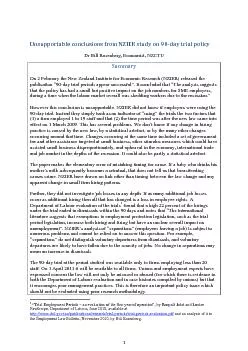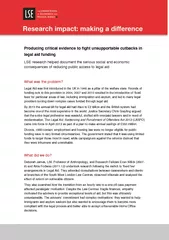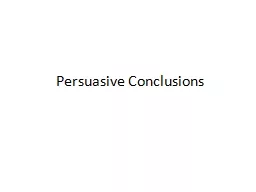PDF-Unsupportable conclusions from NZIER study on 90
Author : pamella-moone | Published Date : 2015-11-29
1 day trial policy Dr Bill Rosenberg Economist NZCTU Summary On 2 February the New Zealand Institute for Economic Research NZIER released the publication x201C 90 day
Presentation Embed Code
Download Presentation
Download Presentation The PPT/PDF document "Unsupportable conclusions from NZIER stu..." is the property of its rightful owner. Permission is granted to download and print the materials on this website for personal, non-commercial use only, and to display it on your personal computer provided you do not modify the materials and that you retain all copyright notices contained in the materials. By downloading content from our website, you accept the terms of this agreement.
Unsupportable conclusions from NZIER study on 90: Transcript
Download Rules Of Document
"Unsupportable conclusions from NZIER study on 90"The content belongs to its owner. You may download and print it for personal use, without modification, and keep all copyright notices. By downloading, you agree to these terms.
Related Documents














